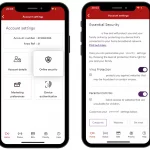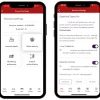Tutela Study Names Fastest UK 4G Mobile Operators for H1 2019
Crowdsourced data analysis company Tutela has revealed the results from their latest study of mobile broadband performance (i.e. speeds, latency, jitter and packet loss) across the United Kingdom. Overall EE (BT) remains top of the pack for 4G networks, while Three UK does the best for older 3G services.
The research was conducted by gathering anonymous usage data from the background of many supporting Android and iOS based Smartphone apps (conducted between 1st February to 30th April 2019), which produced a total of 120 billion measurements, 3.19 billion records, 16.8 million speedtests and 815 million response tests.
Overall the results don’t appear to have changed all that much since the end of last year (H2 2018 results), which probably points to the fact that 4G networks are now reaching a state of deployment maturity. Meanwhile the on-going expansion into harder to reach rural areas won’t deliver enough additional users in order to make much of a dent. We might have to wait for 5G in order to see the next big performance leap.
Advertisement
Predictably EE continues to be the front runner by recording an average download speed (4G + 3G) of 23.06Mbps and uploads of 10.74Mbps, which was noticeably quicker than all of their rivals. Meanwhile all of the operators managed to deliver a good latency time (lower is faster) of around 22-26ms (milliseconds).
Overall Download Speeds for H1 2019 (H2 2018 in brackets)
1. EE 23.06Mbps (24.18Mbps)
2. Vodafone 18.14Mbps (18Mbps)
3. O2 13.29Mbps (13.52Mbps)
4. Three UK 10.4Mbps (9.73Mbps)
Sadly Three UK continued to be the slowest operator for service speeds, although on the flip side they’ve improved the most since the end of 2018. However for us the biggest disappointment was actually O2 because we had been expecting to see an improvement as a result of their move to rollout the 2.3GHz band for 4G services, but instead their performance went into reverse and they seem to suffer an issue with packet loss.

The reasons for all these differences tend to vary. For example, some networks (e.g. EE) have better geographic 4G coverage, more spectrum bands and a more advanced setup than their rivals. Meanwhile others operators (e.g. Three UK) may suffer more strain on their data capacity (congestion) because of affordable unlimited data plans, which are a capacity hog but make them attractive to consumers.
Advertisement
Testing via non-dedicated apps may also be less accurate than dedicate solutions (e.g. Opensignal). Crowdsourced data can be affected by the user’s location and any limitations of the device being used and it lacks a common type of hardware (useful when trying to form a solid baseline of performance). Suffice to say that speed testing like this may not always tell the whole story but it remains a useful bit of extra information.
The first 5G networks are now just starting to rollout in the UK but these will initially be hobbled by issues of coverage, spectrum (Ofcom won’t release more bands until 2020) and take-up for the next couple of years. As a result we won’t really get a good idea of how they compare in the real-world with 4G for awhile.
Mark is a professional technology writer, IT consultant and computer engineer from Dorset (England), he also founded ISPreview in 1999 and enjoys analysing the latest telecoms and broadband developments. Find me on X (Twitter), Mastodon, Facebook, BlueSky, Threads.net and Linkedin.
« Newcastle, North Tyneside and Northumberland in £12m Full Fibre Bid
Ofcom Set March 2020 Launch for 10Mbps UK Broadband USO »


















































Another pointless article that fails to normalize for usage plan sizes.
Must be a poor study as I’m reading this at 2 am and getting 95 Mbps down and 44 Mbps up(42 ms ping and 11 ms jitter) on Three.
There is so many ifs, buts and maybes that make them pointless.
Would be better to log connection at the tower and have to publish all data publicly.
You must work at Three and have some sort of QOS tool because never have I seen 1/3 of those speeds as Three User in past two years around the UK.